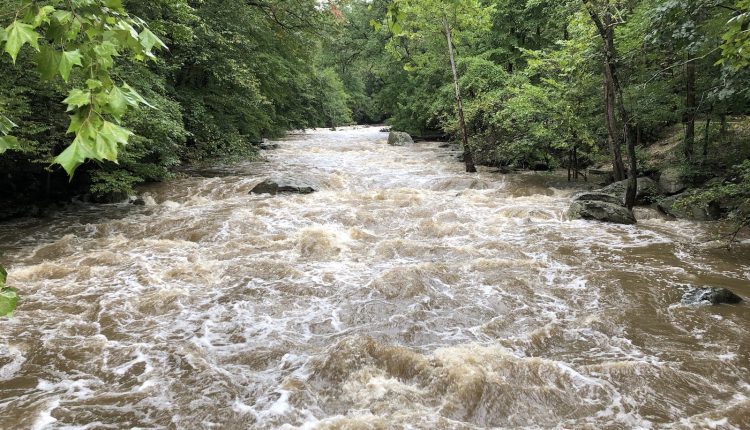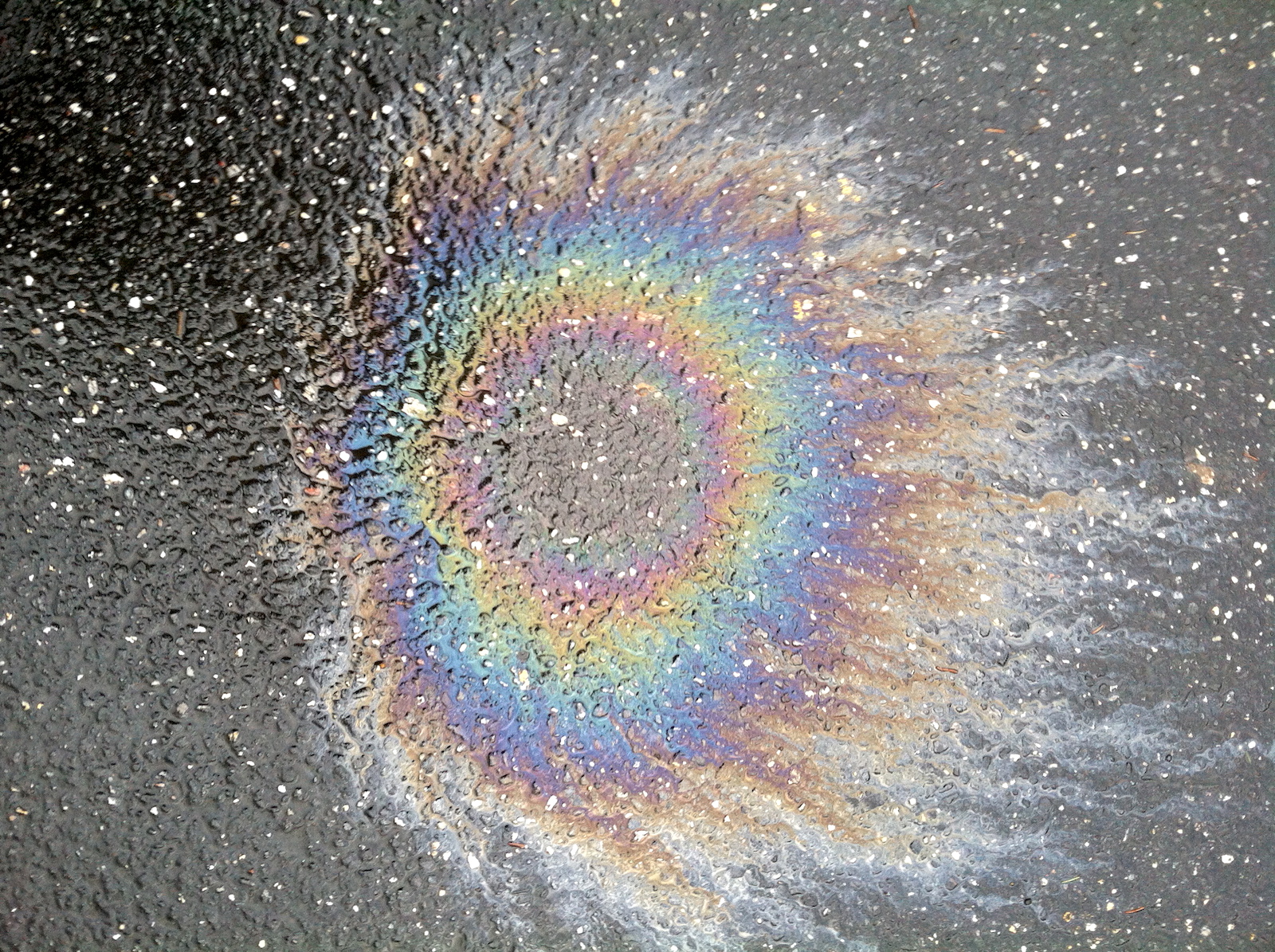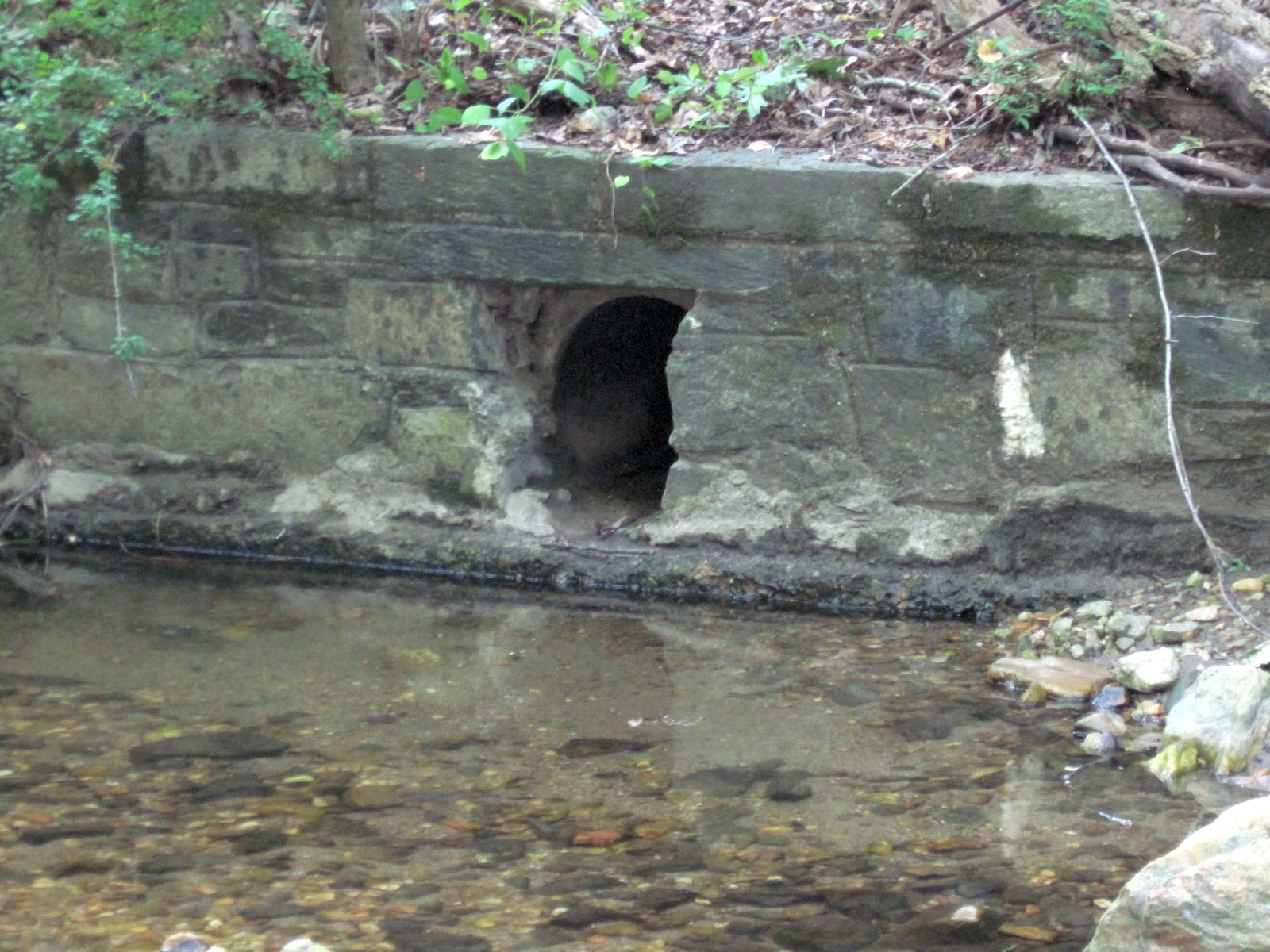
Katy Cain and John Maleri: Stormwater threatens Rock Creek
When it pours like it has in recent weeks, it’s easy to see that stormwater is the biggest challenge facing Rock Creek. A cursory search for Rock Creek on social media shows visitors in awe, photographing the force and volume of water rushing through one of our city’s favorite parks. Images show a destructive, opaque flood where there is usually just a small stream.

For the uninitiated, Rock Creek is the ordinarily docile 33-mile-long body of water that winds its way south through Montgomery County and the District before emptying into the Potomac River. Rock Creek Park, DC’s much-beloved and largest park, follows the stream as it makes its way through the capital city, connecting thousands of people with this creek every year.
Washingtonians of days gone by once relaxed by the creek and even took dips in the waters to cool off during the summer. However, wading in these waters today could put you in contact with raw sewage, heavy metals, and just about any type of litter you can imagine. So what changed?
Impervious surfaces lead to stormwater
The District of Columbia’s sewer system is one of the oldest in the country. The first traces of what we would call a sewer started forming in the city around 1810 when early Washingtonians needed to safely drain stormwater and groundwater from streets surrounding their homes. From there, as DC’s population grew, more homes, buildings, offices, sidewalks and streets were built.

All of this new development allowed more people to move in and start their lives in the city. It also led to an increase in impervious surfaces that don’t allow water to be absorbed naturally into the ground. Water from rain and storms suddenly had no place to go except Rock Creek.
When water flows over impervious surfaces, it picks up speed and volume and can easily turn into a flood. Rock Creek floods constantly. The stormwater itself can cause erosion, blast through streambeds, and cause costly damage to our city when the waters overflow the banks of Rock Creek. But that’s just the start. This water contains urban pollutants like sediment from construction sites, pet wastes, oil, pesticides, road salts and heavy metals. All of these things are harmful to the native wildlife that depends on Rock Creek (and they aren’t ideal for human life either).
Sewers in our parks?
Do you ever walk through Rock Creek Park and wonder why it smells like sewage? We know the answer, and it isn’t pretty. In addition to water pollution that we call “urban runoff,” Rock Creek faces another challenge: sewer overflows. One-third of homes in DC have water downspouts that connect directly to the sewage lines. We call these types of sewers Combined Sewer Systems (CSS).

On a dry day, this system is not a problem. However, during storms, the system can become overloaded with stormwater and sewage; when this happens, the mixture literally overflows into Rock Creek. This is bad for obvious environmental and public health reasons. We will never be able to wade in Rock Creek as long as it contains raw sewage.
If this sewage situation sounds familiar, it should. This is the same problem that has plagued the Anacostia River for decades, making it unsafe to fish from and swim in its waters. But things are looking up for local waterways thanks to an order from the U.S. Environmental Protection Agency to get our waters on a pollution diet.
This has led to a lot of work throughout the region to protect local streams and rivers from sewage and stormwater runoff. Earlier this year, DC Water opened the first leg of the Anacostia River tunnel, which prevented 170 million gallons of combined sewer overflow from entering the river back in March during its very first storm. That is 170 million gallons of sewage that’s not in the river!
Stopping stormwater in Rock Creek
Things are looking up for Rock Creek, too. Instead of creating giant tunnels, Rock Creek Conservancy is working at the community level to stop the water before it ends up in the sewer or the creek. To do this, we are working with partners throughout the Rock Creek watershed to try to bring back water-permeable surfaces to the city so rain can be absorbed by the environment once again.
You can help, too. There are some simple actions you can take that can help stop stormwater. If you have a yard that you can modify, consider installing a rain barrel, rain gardens, permeable pavement or shade trees. All of these things slow water down and give it a chance to be absorbed by the environment instead of flooding Rock Creek. Plus, they make your yard look fantastic! In the same vein, if you have a downspout connected to the sewer, consider having it disconnected and redirected toward your yard or rain garden to keep that water from contributing to sewer overflows.
You can also pick up trash and dog poop, throw out cigarette butts, and use less pesticide and fertilizer so these common pollutants don’t end up in our waters and public spaces when they’re swept away by stormwater.
And of course, you can always volunteer your time or donate to local organizations, like Rock Creek Conservancy, which are out in the field installing green infrastructure, disconnecting downspouts, and working with communities to solve your stormwater problems.
Katy Cain is communications manager and John Maleri is restoration manager at Rock Creek Conservancy.
About commentaries
The DC Line welcomes commentaries representing various viewpoints on local issues of concern, but the opinions expressed do not represent those of The DC Line. Submissions of up to 850 words may be sent to editor Chris Kain at chriskain@thedcline.org.


Comments are closed.